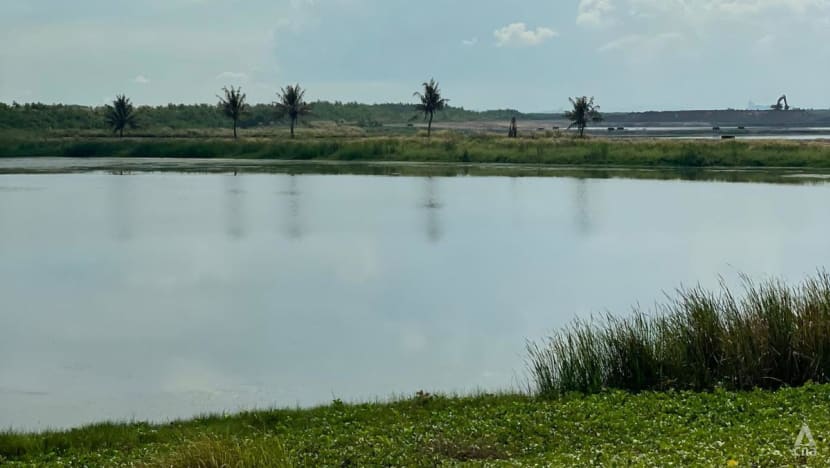Environmental experts sound the alarm on how fast Singapore’s only landfill Semakau is filling up
The rubbish produced by nearly 6 million people in Singapore is incinerated, resulting in over 2,000 tonnes of ash and non-incinerable waste like sludge getting sent to Semakau every day.

Part of Semakau Landfill was converted from sea space. (Photo: CNA/Chloe Choo)

This audio is generated by an AI tool.
SINGAPORE: Singapore's only landfill, Semakau, is now more than half full and environmental experts are sounding the alarm on the need for people to reduce their waste - and fast.
The plot of land, which is larger than 650 football fields, has two parts. The first is nearly at maximum capacity, while the other is around 10 per cent filled.
The 350ha landfill, which has enough space to hold waste the capacity of 11,200 Olympic-sized swimming pools, is expected to reach full capacity by 2035.
The rubbish produced by nearly 6 million people in Singapore is incinerated, resulting in over 2,000 tonnes of ash and non-incinerable waste like sludge getting sent to Semakau every day.
“We have a real problem in Singapore and rising production of waste by consumers and by households is clearly the main reason for us having this concern,” said Associate Professor Johan Sulaeman, director of the Sustainable and Green Finance Institute at the National University of Singapore (NUS).
REPURPOSING ASH
With the island filling up fast and authorities racing against time to extend its lifespan, Assoc Prof Sulaeman said there are two solutions - repurposing the ash and pushing more actively for a reduction in waste.
“We can mine the ash and repurpose the ash for something that is useful either for construction or perhaps for reclamation of land,” he said, adding that the government is also studying the possible solution.
The National Environment Agency is conducting studies with local universities NUS and Nanyang Technological University to determine if the ash from this island can be repurposed into construction materials.
However, there are challenges in doing so, said Assoc Prof Sulaeman.
Such repurposing could be “controversial to some extent” due to the possibility of the ash being contaminated from the incineration process, he said.

“This (ash) may need to be processed again before it can be used for any type of land reclamation or for example, making concrete out,” he said.
However, such issues can be overcome with technology, he said, while acknowledging that the cost of its implementation would be high.
He noted that there are other costs to consider.
“We need to understand what is the cost of the elimination of materials that can be harmful to the environment as well as to the society,” he said.
“You have chemicals, you have microbiome content that can pose some risk to human and environmental health and we need to reduce those risks and hope that we can eliminate the risks.”
Despite repurposing ash being a potential option, Assoc Prof Sulaeman said the well-known “reduce, reuse, recycle” strategy remains key.
REDUCING WASTE
When it comes to reducing waste, which Singapore has targeted through several campaigns, Assoc Prof Sulaeman pointed out single-use utensils in particular.
“This can be done by reducing one-use plastics and one-use utensils in food centres, food courts and restaurants as well as delivery service,” he said.
He added that promoting recycling is important by making it easier for people to do so.
“Currently, Singapore is trying hard to increase the rate of recycling but my sense is that households find recycling to be quite cumbersome,” he said.
Related:
At the same time, there are many recycling initiatives that end up with items becoming waste, so there is a need to reduce the rate of contamination.
Singapore produced about 7.4 million tonnes of waste last year and of that, only about half was recycled.
Non-governmental organisation Zero Waste SG also called on businesses to do their part. For instance, they can put in place a recycling programme to nudge their customers in the right direction, said its executive director Tan Hui Leng.
“What we have to look at is probably a more holistic way of managing our waste. So that starts all the way from reducing what we're creating in the first place,” she said.
“It's key for manufacturers, for producers to even look at how they can design for circularity a bit better.”
This includes asking questions like whether an item is durable, or if it can be repaired or built in a modular form such that when one part is broken, that part alone can be replaced so the entire product does not have to be tossed.



















